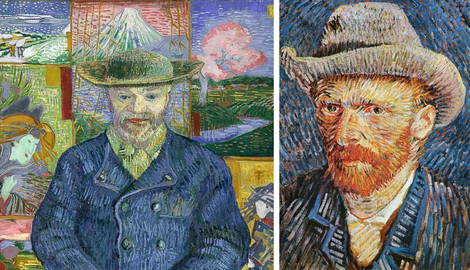
Post-impressionist painter Vincent van Gogh left behind such an extensive body of art that it might seem as if he spent a lifetime harnessing his skills as a painter. But in reality, the time he dedicated to making art was relatively short-lived, spanning roughly less than a decade, from 1881 to 1890. Van Gogh was 27 by the time he took up art, by which point he had already tried his hand at several other career options, including art dealership, theology, and teaching. But it was Van Gogh’s brother Theo, an art dealer, who persuaded his brother to pursue a career as an artist, setting him on a path towards the posthumous success her has earned today.
He Began Painting in Adulthood

After a series of false starts in teaching, bookselling, art dealership and theology, Van Gogh had found himself jobless and penniless at the age of 27. But his strongest source of support came from his brother Theo, who, after admiring Van Gogh’s sketches in their letter exchanges, suggested he focus his time on perfecting an art practice. Theo even came to provide financial support to his brother on a regular basis over the following years, which gave Van Gogh the security to pursue his dream. Vincent took up painting lessons with the artist Anton Mauve in The Hague, and his first commission, from an uncle, was to produce twelve drawings of city views in The Hague.
Over time, his earliest art took on a somber quality, depicting workers weavers, and farmers who lived a simple, rustic life, reflecting the realist art of Gustave Courbet and Edouard Manet. The Potato Eaters, 1885 is widely recognized as Van Gogh’s first masterpiece, with its harsh lighting and dour interior reflecting the struggles faced by his subjects. While the moody color scheme is a far cry from Van Gogh’s later paintings, it is clear to see the same emotional angst that would become a recurring feature of his mature art.
Painting in Holland

In the mid-1880s Van Gogh spent time in Antwerp, trying his hand at a series of drawing classes, while visiting the many churches, museums and galleries on drawing trips. Within his own art he continued to focus on life studies with the dark, chiaroscuro lighting of the old masters. But he quickly became frustrated with the traditional nature of the classes in Antwerp, and instead, he set his sights on the vibrant, flourishing city of Paris, where his brother Theo was staying. From this point forward, Vincent would continue to live in France for the rest of his life.
Painting in Paris – Impressionism and Japonisme

In 1886 Van Gogh made his way to Paris, and he remained for the next 2 years here. Through his brother Theo, Vincent saw the art of the Impressionists, which had a profound impact on his approach to painting. He swiftly adopted a lighter, brighter color palette, and began painting with short, dappled brush strokes. Like many artists of his generation, Van Gogh also looked to Japanese woodblock prints for inspiration, emulating their flat passages of bright color, cropped designs, and floral motifs.

We might say this was the time Van Gogh’s career as a painter truly began, for he found the signature style that would sustain him in the years to come. Yet Van Gogh’s time in Paris was short-lived – he only remained here for two years before retreating to the rural countryside in search of a quieter, simpler way of life.
Mature Work

Van Gogh’s late paintings are among the most revered of his short-lived, yet fruitful career. They depict his increasingly troubled state of mind, with darker color schemes and frenzied passages of paint, and often feature ominous emblems including the reaper, or circling black crows. These late-career paintings can be understood as a body of work in their own right, with the distinctive brand of angst and unease that we now associate so closely with the art of Van Gogh.










